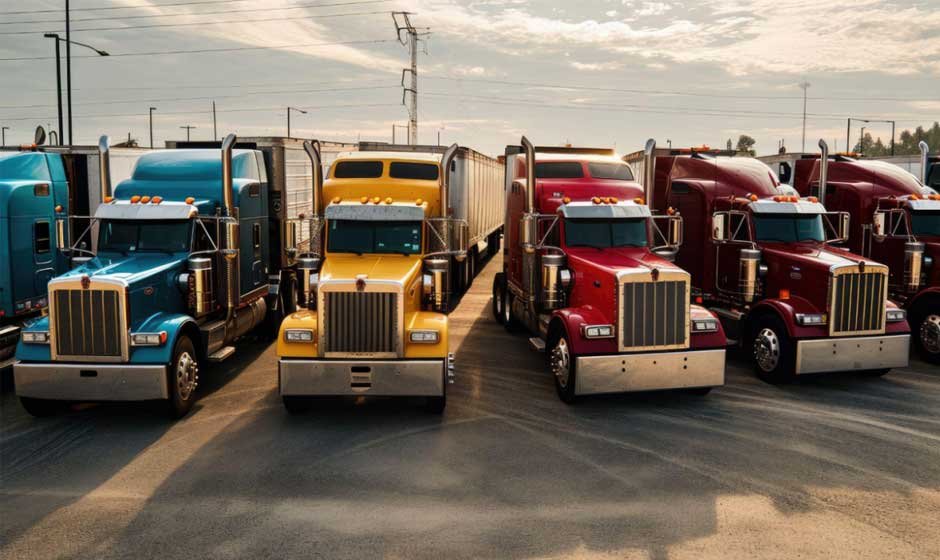The trucking industry is undergoing a major transformation, driven by cutting-edge technology that is not only reshaping logistics and safety but also redefining how insurance companies assess and cover risk.
But the impact doesn’t stop there. Modern trucking technology is also reshaping how insurance companies evaluate risk, set premiums, and build policies.
As smart solutions become integral to fleet operations, insurers are shifting away from traditional models toward more data-driven, flexible, and dynamic approaches.
But what exactly is changing, and why should fleet owners, operators, and insurance providers pay close attention?
Read on to discover how new trucking technology is changing how insurance works for trucks.
Understand the Role of Tech in Trucking
As new trucking technology transforms fleets’ operations, it also redefines how risks are assessed and managed. Understanding this shift is essential for ensuring insurance strategies align with modern demands in the trucking business operations.
- Tech influences underwriting decisions through real-time risk metrics
- Fleet owners can leverage data to negotiate favorable insurance terms
- Insurers rely on digital transparency for accurate policy customization
- Failing to adapt can lead to outdated coverage and increased liability
The New Technology Driving the Change
Various technologies are fueling the evolution of insurance in trucking by improving safety, accountability, and operational insight. Let’s look at such key innovations driving the transformation:
Telematics and Real-Time Monitoring
Telematics systems collect and transmit real-time data on vehicle location, speed, braking patterns, and driver behavior. This enables insurers to track risk profiles dynamically and reward safer driving with better rates.
Advanced Driver Assistance Systems (ADAS)
Features like automatic braking, lane departure warnings, and blind-spot monitoring reduce the likelihood of accidents. These innovations contribute to lower claim frequency and promote a safer driving environment.
Automatic Emergency Braking (AEB) effectiveness in reducing front-to-rear crashes improved from 46% (2015-2017) to 52% (2021-2023), demonstrating clear technological advancements. This reduction in incidents not only saves lives but also leads to fewer claims and lower insurance costs for tech-equipped fleets.
Autonomous and Semi-Autonomous Trucks
Self-driving technology is beginning to eliminate the human error factor in freight transport. While fully autonomous trucks are still emerging, semi-autonomous systems influence liability frameworks and insurance needs.
Connected Fleet Management Platforms
Fleet management software integration allows vehicle health monitoring, route optimization, compliance tracking, and driver performance in one system. These platforms offer insurers a holistic view of operational risk.
AI and Predictive Analytics
AI-driven analytics predict high-risk scenarios and maintenance needs before issues arise. This proactive risk management helps insurers reduce losses and tailor policies to specific operational realities.
Why Are Former Trucking Practices Demanding a Different Insurance Approach?
Before the rise of new trucking technology, trucking relied on outdated systems that lacked the accuracy, speed, and visibility needed for practical insurance assessment.
Reliance on Historical Claims Data
Traditional underwriting depended on past claims and general risk factors, offering little insight into present-day operations or driver habits.
Limited Visibility into Driver Behavior
Without real-time monitoring, assessing individual driver risk accurately was nearly impossible, leading to generalized premium models.
Manual Logbooks and Paper Trails
Paper-based systems were prone to errors, manipulation, and inefficiencies, making accurate risk assessment difficult.
Delayed and Inaccurate Incident Reporting
Without real-time tracking or digital logs, accidents were reported late or with missing details, often causing disputes or claim denials. This directly impacted insurer response time for transport claims, leading to more extended resolution periods and operational downtime for carriers.
Higher Fraud and Liability Risk
Lack of transparent data increased exposure to fraudulent claims and disputes over liability, pushing premiums higher.
How Is Technology in Trucking Reshaping Insurance Requirements?
With advanced data streams and automation, commercial insurance for truckers is shifting to more innovative models that adapt to real-time operational realities.
Shift from Static to Dynamic Risk Assessment
Insurers now assess risk based on real-time driver and vehicle data, allowing for ongoing adjustments to coverage and pricing.
Lower Premiums for Tech-Enabled Fleets
Safer fleets backed by solid data can negotiate better insurance rates, reducing operating costs and encouraging tech adoption.
Increased Data Transparency Expectations
Insurers are demanding operational transparency. Fleets that provide comprehensive data are considered lower risk and benefit from streamlined claims processing.
Conclusion
Technology is optimizing trucking operations and transforming the foundation of risk assessment and management in the industry.
Staying ahead means embracing the tech and understanding its implications for insurance in a new era of advancements.
Preventty USA Specialty Insurance provides trucking insurance solutions tailored for tech-enabled fleets. It helps businesses stay ahead with dynamic coverage, real-time risk assessment, and data-driven policy models.
Partnering with forward-thinking insurance providers ensures your protection not only today but also as the road ahead changes.
Cover your fleet, the smart way!










